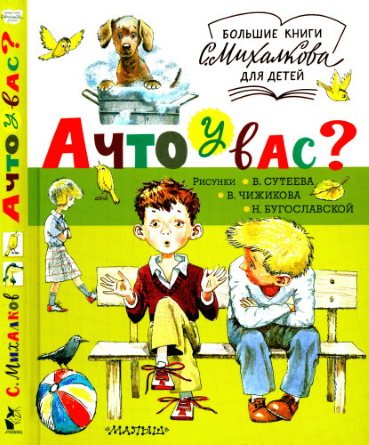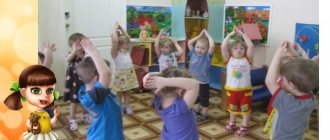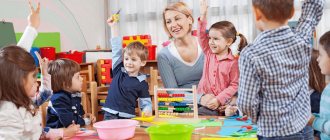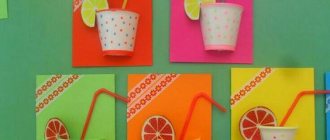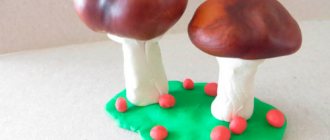Psychological aspect
During their education, children develop an aesthetic taste. It manifests itself in the appreciation of works of art, when examining paintings. At the same time, you can admire the beauty of the world in everyday life. Children see aesthetics in the objects and clothes around them.
Aesthetic education of preschoolers is a long process, in which the main role is given to education. In this case, the teacher influences, first of all, the child’s psychology. Children are read books (certain works for each age group) and allowed to listen to music.
To experience the beauty of the literary word, read books by such authors as:
- Chukovsky K. I.
- Marshak S. Ya.
- Mikhalkov S. V.
|
The works of the following composers help to understand the beauty of music:
- Kabalevsky D. B.
- Tchaikovsky P. I.
All this affects children psychologically. They do not expend physical effort to listen to works. Only the brain works. If books bring children pleasure, then this shapes their aesthetic taste.
Pedagogical basics
In the course of his activities, the teacher must be able to encourage the child not only to emotionally celebrate objects of art, but also to form his own aesthetic idea of them. Thanks to this, kids learn to appreciate, they develop basic concepts about beautiful objects.
In preschool age, along with aesthetic education, the formation of artistic skills occurs. If a child has certain inclinations, then there is a great chance of developing them into talent.

Aesthetic education of preschoolers should be diverse in order to identify a gifted child in time
Giftedness cannot be missed. If children are able not only to form personal impressions and express them, but also to convey them physically (drawing, modeling), then this indicates a higher stage of development.
In his work, the teacher conducts a large number of practical classes. Children's creativity is mainly based on imitation. The younger the child, the more he tries to repeat everything after the adult.
At an older age, children already show initiative. For example, they can supplement the drawing with details not included in the plan. Such independence cannot be suppressed.
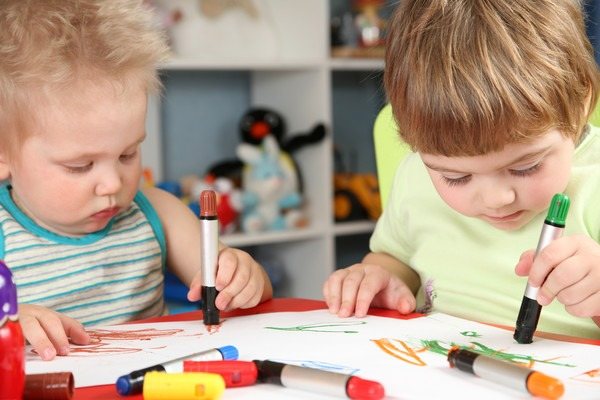
As children grow older, they have a desire to add new details to the drawing—this needs to be supported.
The basis of pedagogical activity is not only the introduction of the child to art. First of all, children themselves are creators. And when the desire to create awakens in them, it needs to be supported. In older groups of kindergarten, artistic crafts become fuller and more expressive.
Krupskaya N.K. noted that along with the aesthetic sense, creative thinking develops. This is easy to notice if you watch children. The most developed children can independently organize a role-playing game. Their imagination works, they themselves distribute roles, create a variety of situations.
Thus, the teacher gives children a lot of knowledge during their education. The preschoolers themselves combine everything together, evaluate what they see and hear. This ultimately gives a good result: the child is developed not only morally, but also understands the aesthetics of the world. He knows how to apply his knowledge in practice.
According to the Federal State Educational Standard, aesthetics training should take place in close conjunction with artistic skills. Thanks to modeling and drawing, the child expresses his experiences and impressions of what he sees. Children are offered a lot of options to realize themselves. The purpose of such events is to create a desire to create.
Examples of activities with preschoolers
Aesthetic education of preschoolers is a process organized by a teacher or parents. They use not only a theoretical basis, but also a practical one. Children are engaged in reading fiction, looking at pictures, and also creating objects of art.
Integrated lesson “Fairytale Bird”
Initially, children are introduced to a work about a fairy-tale bird. You can use fiction about the Firebird. The children are read fairy tales and shown pictures describing a magical creature.
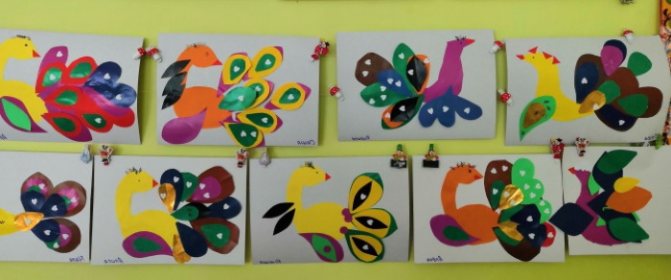
Integrated lesson “Fairytale Bird” (application)

Integrated lesson “Fairytale Bird” (plasticine)
After this, they talk with the children. They ask you to give a description of the bird. Children who find it difficult to make contact are asked leading questions. For example, “What color are her feathers?” After the children appreciate the attractiveness of the character, they are invited to make their own Firebird.
Depending on the age of the children, they are given paints or pencils. You can use plasticine. After the material has been distributed, the children are allowed to use their imagination and make their own crafts.
Application “Decorating dishes”
This activity contributes to the development of the child’s creative abilities and develops his sense of beauty. During the activity, perseverance is developed and accuracy is demonstrated.
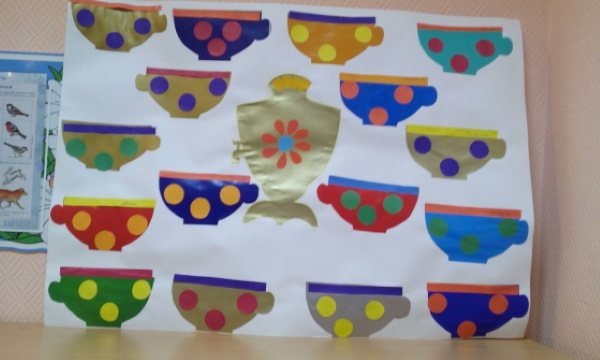
The teacher prepares handouts in advance:
- Templates for mugs and plates – to choose from.
- Carves patterns or ornaments.
- Selects demonstration material.
This activity can be added to the cycle about folk art. Before practice, children are told about how in the old days it was customary to paint dishes. What significance was attached to patterns? As an example, photographs of folk art are shown.
After theory, they begin practice. Each child is given a piece of utensils and asked to decorate it based on personal taste.

The activity “Decorating dishes” can also be done with plasticine
Draw children's attention to neatness, conciseness of details, and selected colors. You can correct the child a little during work, offer him parts that match the color. At the end of the lesson, they admire the created creations.
Craft for March 8th “Bouquet for Mom”
This activity is suitable both as a creative master class and as an opportunity to make a craft for a specific holiday. To hold the event you will need preliminary preparation. It is necessary to select the material from which children will create bouquets. These can be buttons, scraps of fabric, colored paper, ribbons.
The easiest way to make a bouquet:
- Use colored paper clippings.
- Prepare beautiful templates.
For work, the teacher cuts out beautiful flowers from paper. Be sure to draw the outlines of the plants on a blank sheet of paper so that the child can see where to stick the blank. Before starting practical activities, the teacher tells the children the theoretical foundations. After this he distributes the material.
It is advisable to do finger exercises and then start creating crafts.
Creating a still life
First, children are introduced to this type of art in painting as still life.
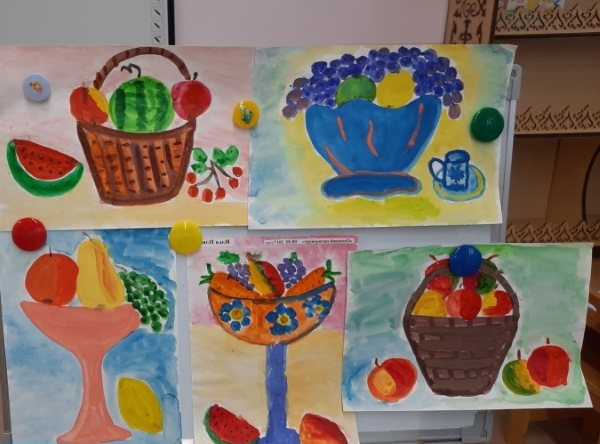
Paintings by outstanding artists are on display:
- “Rowanka”, Mashkov I. I.
- “Cornflowers”, Levitan I. I.
- "Base with Fruit", Picasso P.
First, the teacher prepares templates with an empty fruit vase. After the children have become familiar with the still lifes, the teacher shows them a blank sheet. He says that there is not enough fruit in the image, because of this the still life does not work.
Children must add fruit to the template with the vase. Use pencils, paints or wax crayons.
Goals and objectives
In the course of teaching activities, educators solve the following tasks:
- Helps the child develop aesthetic perception.
- Form an idea of aesthetics.
- Develop artistic and creative abilities.
- Form aesthetic taste.
The purpose of this training is to introduce the child to the world of art. He develops elementary ideas about its varieties. Children develop the prerequisites for value-semantic perception.
